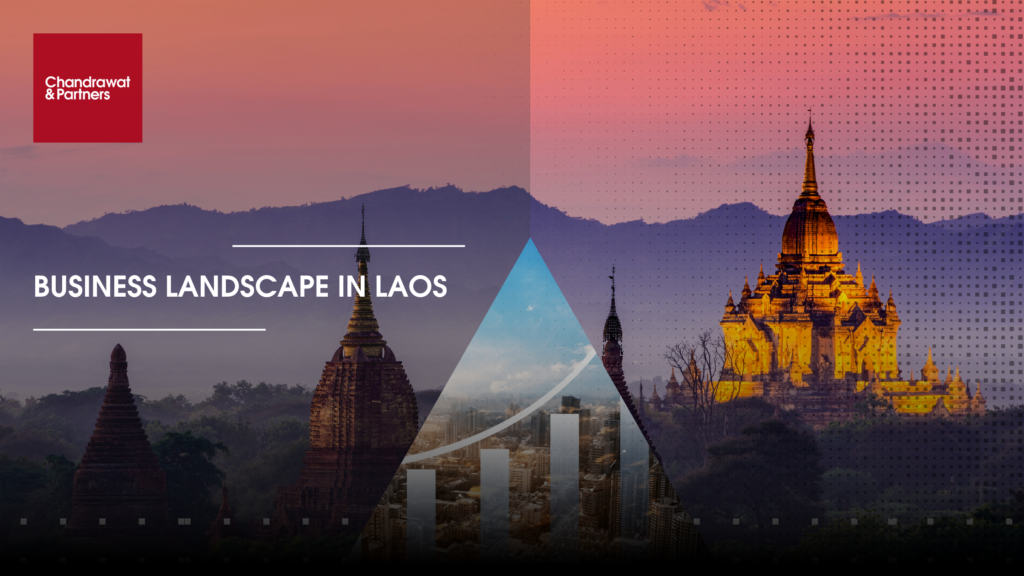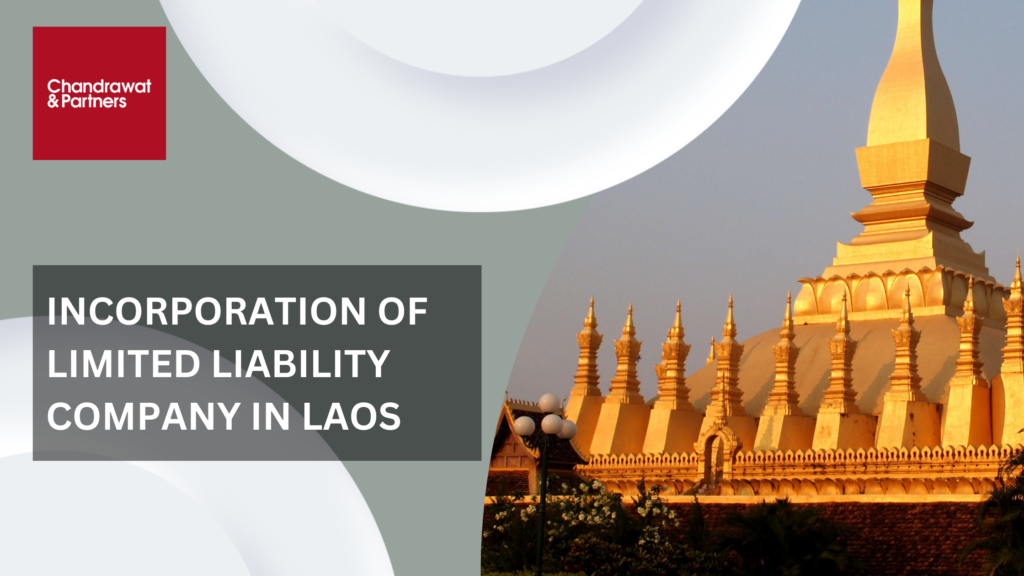We have a team of professionals to help you with all your business needs. So, that you can focus on business expansion in Laos.
Please feel free to email us on enquiries@chandrawatpartners.com
Laos
Why laos?
Surrounded by China, Vietnam, Cambodia, Thailand, and Burma, Laos is a mountainous country. As per Laos government’s anticipation, by 2025 hydropower will become the country’s biggest source of revenue. The Mekong River plays a vital role as transportation route for cargo and passengers, a source of electricity at dams, a water supply for crops, and a home to fisheries which shares a major part in the diet of the Laotian people. However, to make growth more sustainable and to increase its positive effects across society, Laos is looking to diversify its economy and create more jobs. Laos’ economic freedom score of 50.3, makes its economy the 147th freest in the 2023 Index and the country has ranked 25th among 40 countries in the Asia Pacific region. Laos is among the least developed and poorest countries in Asia, but significant economic growth in the past decade has benefited the country. Challenges remain, however, and the Lao economy remains dependent on external demand for its natural resources, particularly mining, hydropower and forestry.
Advantages
The country has experienced rapid economic growth over the past 25 years due to following reasons:
High growth country
After the Asian financial crisis Laos is growing with an impressive record of between 7% to 8% and this is really an impressive record.
Low competition from multinationals
Laos is a relatively unexplored market by multinationals which is a big advantage of doing business for foreign businesses in Laos. There is not much competition from major multinationals.
Renewable energy
Laos wants to become the battery of Southeast Asia whereby, combination of a mountainous territory and an abundance of rivers makes Laos a great place to produce electricity from hydropower. Moreover, the country is building around 100 dams mostly along the Mekong River and is planning to become an exporter of electricity to its big neighbors such as Vietnam, Thailand, Malaysia and Myanmar.
Infrastructure investments
Laos invests more than 30% of its Gross Domestic Product in infrastructures every year, apart from energy, mostly in transportation, i.e. roads and railways. Moreover, it is worth mentioning here a mega project that will connect the southern part of China to Bangkok by train passing through Laos.
Tax free zones
Following the examples of China, Vietnam and even Thailand, Laos has established tax free zones; these are investment zones where the foreign companies are given tax holidays for as long as 50 years from corporation tax and they do not have to pay tariffs and duties on the goods they import, if these are used in the production process in Laos.
Simple Tax Regime
In Laos personal income is taxed at a progressive rate from 0% to 24%, moreover, it applies to all income earned in Laos such as salary, benefits in kind and other remunerations, both for Laos people and expatriate receiving revenues from Laos PDR (The Lao People’s Democratic Republic) or abroad regardless of the length of their employment and stay in Laos.
Individuals Tax
In Laos, all sole traders and independent contractors are liable for personal tax on their business income derived in Lao PDR. Both Laos and foreign individuals earning income in Laos in the form of salaries, benefits in kind, and other remuneration are subject to personal income tax.
Expatriates who work in Lao PDR and obtain remuneration in Lao PDR are liable to pay personal income tax, regardless of the period of their employment and stay in Lao PDR.
Following are the annual personal income tax rates available for both Lao and foreign individuals:
- Income from LAK 0 to 3,600,000 is liable to tax at a rate of 0% of annual income;
- Income from LAK 3,600,001 to 8,000,000 is liable to tax at a rate of 5% of annual income;
- Income from LAK 8,000,001 to 15,000,00 is liable to tax at a rate of 10% of annual income;
- Income from LAK 15,000,001 to 25,000,000 is liable to tax at a rate of 15% of annual income;
- Income from LAK 25,000,001 to 40,000,000 is liable to tax at a rate of 20% of annual income; and
- Income from LAK 40,000,001 and above is liable to tax at rate of 24% of annual income.
Corporate income taxes
Profit tax (PT)
In Laos, The rate of Profit Tax of 24% applies to businesses of local and foreign legal entities, except those which are listed in the securities market, which shall enjoy a reduction of 5%from the normal rate for the period of four years from the date of listing. After that period, the normal rate defined under this law shall be applied;
The rate of 26% applies to legal entities producing, importing and distributing tobacco products, of which 2% is given to the Tobacco Control Fund as stipulated in the article 46 of the Tobacco Control Law;
Laos Companies
Enterprise Law of Laos provides different types of legal structures in the country that can be used to operate a business in Laos, including:
Representative office
Representative offices will typically serve as an entity for collecting market information or performing surveys before an investor proceeds with heavier investment and establishing a revenue generating entity. Basically, these structures are limited in the types of activities it can engage in and is prohibited from conducting business activities or generating income.
Limited company
This type of entities is typically favored by investors, particularly foreign investors, however a limited company must have at least two shareholders and one director. As the name suggests the liability of the shareholders is limited to the capital invested by them. However there are many restrictions on foreign investors about share equity with a local partner, so they opt for the limited company structure because their liability is clearly limited.
Sole limited company
Sole limited companies follow the same rules as limited company, but the major difference is that the shareholding structure includes only a single shareholder. Further, if a regular limited company has a single shareholder during the course of its activities, then it will be required to change its legal structure to a sole limited company.
Public limited company
To form a public limited company, minimum capital investment required is USD 125,000. Further, it requires at least seven shareholders, three company directors, and one legal representative to set up a public limited company.
Wholly owned foreign company
Many businesses which usually export goods from Laos, set up this kind of business entity. It gives 100% ownership to the foreigner.
Branch Office
Companies such as banking institutions, financial services, insurance, airlines usually set up a branch office however, the parent company decides the activities of the branch office.
SETTING UP OF A LIMITED COMPANY IN LAOS
The two major reasons why multinationals want a company registration in Laos is the low labour cost and tax benefits. To start a new company, it is imperative to have a concrete business plan.
The general rule is that a 100 percent foreign-owned investment is accepted under Lao law. There are no restrictions on foreign investment in Laos, except as otherwise specified.
The usual timeframe for company registration in Lao People’s Democratic Republic (PDR) is approximately two to six weeks from the date of filing a completed application with the Ministry of Industry and Commerce (MOIC).
Applying for and obtaining an industry-specific operating licence is an independent process from company establishment and may take approximately two to six months after the enterprise registration certificate has been issued, depending on the industry and the responsiveness of the relevant ministry.
Process for company registration in Laos
The incorporation of a company has the following steps:
- The person should apply for a Name Reservation Certificate. It will take one day.
- Then, apply for an Enterprise Registration Certificate (“ERC”). This will take 10 days.
- After obtaining the ERC, the person should apply for an operating licence from the relevant ministry. It will take 30 days.
- The next step would be to apply for a Tax Registration Certificate (“TRC”). This will take two weeks, but it can be done simultaneously with the previous procedure.
- After TRC, the person should obtain approval of company sign. This will take 5 days but can be done simultaneously with the previous procedure.
- Then, prepare a company seal. This will take 45 days.
- And finally, register the workers for social security. This will take 7 days. No fee will be charged.
Documents required
Among the documentation that is required to register a company in Laos are:
- Articles of Association, which are required for every business registration;
- A Board/Shareholders’ Resolution approving the proposed company’s establishment (including the proposed company name and registered capital) and appointing the shareholder’s representative(s) and the managing director of the proposed company;
- Contract of incorporation (if there are multiple shareholders);
- CVs of legal representatives and directors;
- Shareholder’s agreement;
- In the case of a limited company, the leasing agreement is required since the company must lease a space before submitting the registration application;
- Bank statements that support the financial viability of the investor;
- The personal details of the investor include copies of the passport and resume; and
- The business plan outlining the nature of the intended business and its operations.
related blogs

However, to make growth more sustainable and to increase its positive effects across society, Laos is looking to diversify its economy and create more jobs. Laos’s economic freedom score is 50.3, making its economy the 147th freest in the 2023 Index. Its score is 1.1 points higher than last year. Laos is ranked 32nd out of 39 countries in the Asia–Pacific region.
Author: Chandrawat & Partners
Topic: Doing Business in Laos
Download our short guide on – Doing Business in Laos
However, to make growth more sustainable and to increase its positive effects across society, Laos is looking to diversify its economy and create more jobs. Laos’s economic freedom score is 50.3, making its economy the 147th freest in the 2023 Index. Its score is 1.1 points higher than last year. Laos is ranked 32nd out of 39 countries in the Asia–Pacific region.
Author: Chandrawat & Partners
Topic: Doing Business in Laos
Contact Us
Get in touch with the right people to get the right help in setting up your business in Laos.
Contact us at: enquiries@chandrawatpartners.com
Laos
We have a team of professionals to help you with all your business needs. So, that you can focus on business expansion in Laos.
WHY LAOS?
Surrounded by China, Vietnam, Cambodia, Thailand, and Burma, Laos is a mountainous country. As per Laos government’s anticipation, by 2025 hydropower will become the country’s biggest source of revenue. The Mekong River plays a vital role as transportation route for cargo and passengers, a source of electricity at dams, a water supply for crops, and a home to fisheries which shares a major part in the diet of the Laotian people. However, to make growth more sustainable and to increase its positive effects across society, Laos is looking to diversify its economy and create more jobs. Laos’ economic freedom score of 50.3, makes its economy the 147th freest in the 2023 Index and the country has ranked 25th among 40 countries in the Asia Pacific region. Laos is among the least developed and poorest countries in Asia, but significant economic growth in the past decade has benefited the country. Challenges remain, however, and the Lao economy remains dependent on external demand for its natural resources, particularly mining, hydropower and forestry.
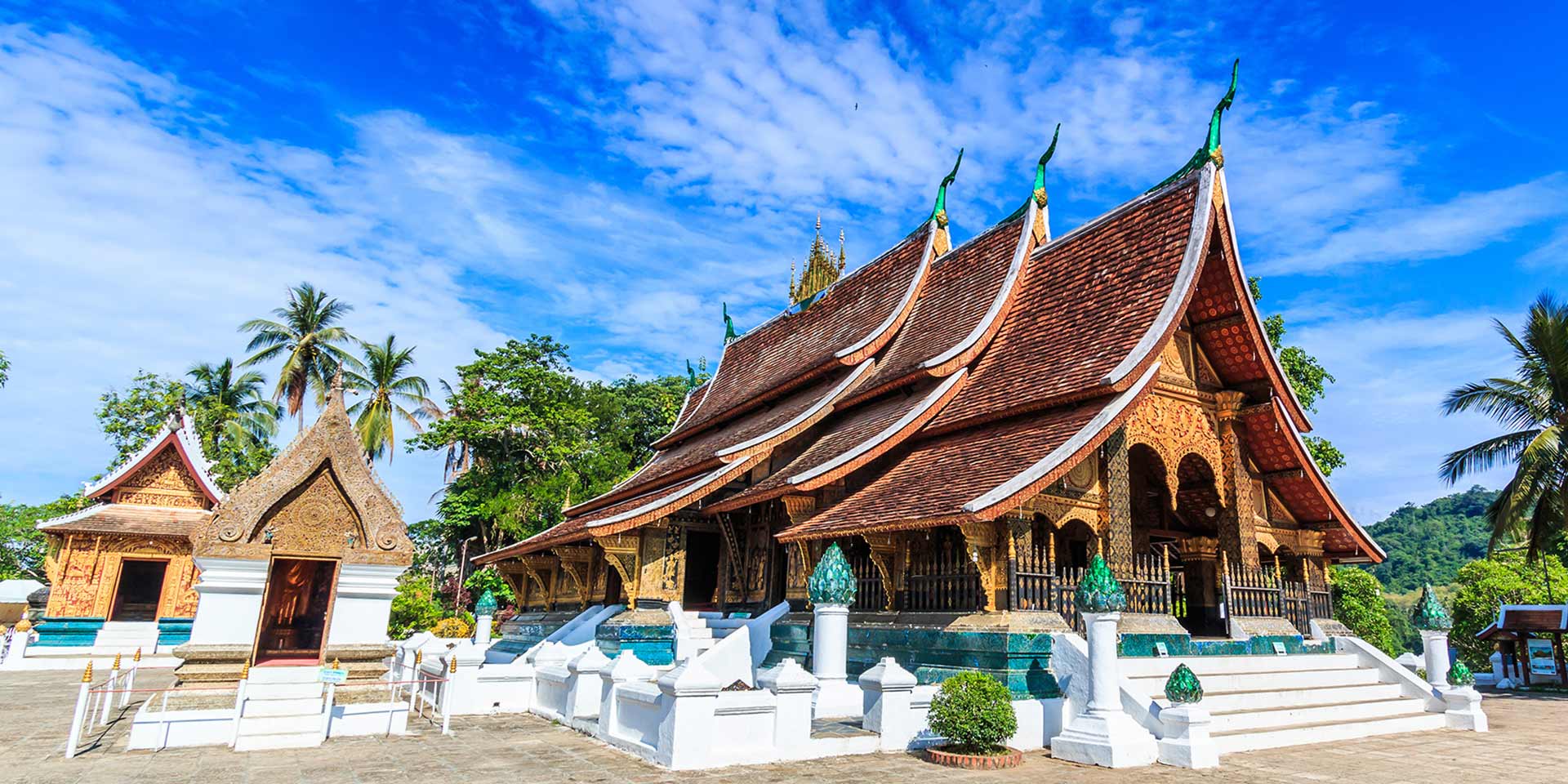
ADVANTAGES
The country has experienced rapid economic growth over the past 25 years due to following reasons:
High growth country
After the Asian financial crisis Laos is growing with an impressive record of between 7% to 8% and this is really an impressive record.
Low competition from multinationals
Laos is a relatively unexplored market by multinationals which is a big advantage of doing business for foreign businesses in Laos. There is not much competition from major multinationals.
Renewable energy
Laos wants to become the battery of Southeast Asia whereby, combination of a mountainous territory and an abundance of rivers makes Laos a great place to produce electricity from hydropower. Moreover, the country is building around 100 dams mostly along the Mekong River and is planning to become an exporter of electricity to its big neighbors such as Vietnam, Thailand, Malaysia and Myanmar.
Infrastructure investments
Laos invests more than 30% of its Gross Domestic Product in infrastructures every year, apart from energy, mostly in transportation, i.e. roads and railways. Moreover, it is worth mentioning here a mega project that will connect the southern part of China to Bangkok by train passing through Laos.
Tax free zones
Following the examples of China, Vietnam and even Thailand, Laos has established tax free zones; these are investment zones where the foreign companies are given tax holidays for as long as 50 years from corporation tax and they do not have to pay tariffs and duties on the goods they import, if these are used in the production process in Laos.
SIMPLE TAX REGIME
In Laos personal income is taxed at a progressive rate from 0% to 24%, moreover, it applies to all income earned in Laos such as salary, benefits in kind and other remunerations, both for Laos people and expatriate receiving revenues from Laos PDR (The Lao People’s Democratic Republic) or abroad regardless of the length of their employment and stay in Laos.
Individuals Tax
In Laos, all sole traders and independent contractors are liable for personal tax on their business income derived in Lao PDR. Both Laos and foreign individuals earning income in Laos in the form of salaries, benefits in kind, and other remuneration are subject to personal income tax.
Expatriates who work in Lao PDR and obtain remuneration in Lao PDR are liable to pay personal income tax, regardless of the period of their employment and stay in Lao PDR.
Following are the annual personal income tax rates available for both Lao and foreign individuals:
- Income from LAK 0 to 3,600,000 is liable to tax at a rate of 0% of annual income;
- Income from LAK 3,600,001 to 8,000,000 is liable to tax at a rate of 5% of annual income;
- Income from LAK 8,000,001 to 15,000,00 is liable to tax at a rate of 10% of annual income;
- Income from LAK 15,000,001 to 25,000,000 is liable to tax at a rate of 15% of annual income;
- Income from LAK 25,000,001 to 40,000,000 is liable to tax at a rate of 20% of annual income; and
- Income from LAK 40,000,001 and above is liable to tax at rate of 24% of annual income.
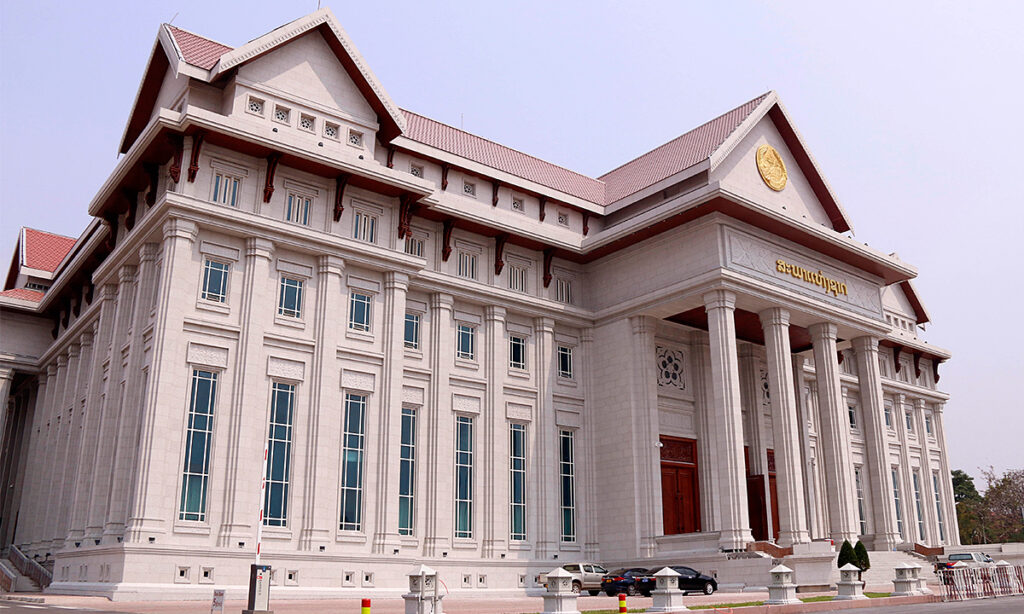
Corporate income taxes
Profit tax (PT)
In Laos, The rate of Profit Tax of 24% applies to businesses of local and foreign legal entities, except those which are listed in the securities market, which shall enjoy a reduction of 5%from the normal rate for the period of four years from the date of listing. After that period, the normal rate defined under this law shall be applied;
The rate of 26% applies to legal entities producing, importing and distributing tobacco products, of which 2% is given to the Tobacco Control Fund as stipulated in the article 46 of the Tobacco Control Law;
LAOS COMPANIES
Enterprise Law of Laos provides different types of legal structures in the country that can be used to operate a business in Laos, including:
Representative office
Representative offices will typically serve as an entity for collecting market information or performing surveys before an investor proceeds with heavier investment and establishing a revenue generating entity. Basically, these structures are limited in the types of activities it can engage in and is prohibited from conducting business activities or generating income.
Limited company
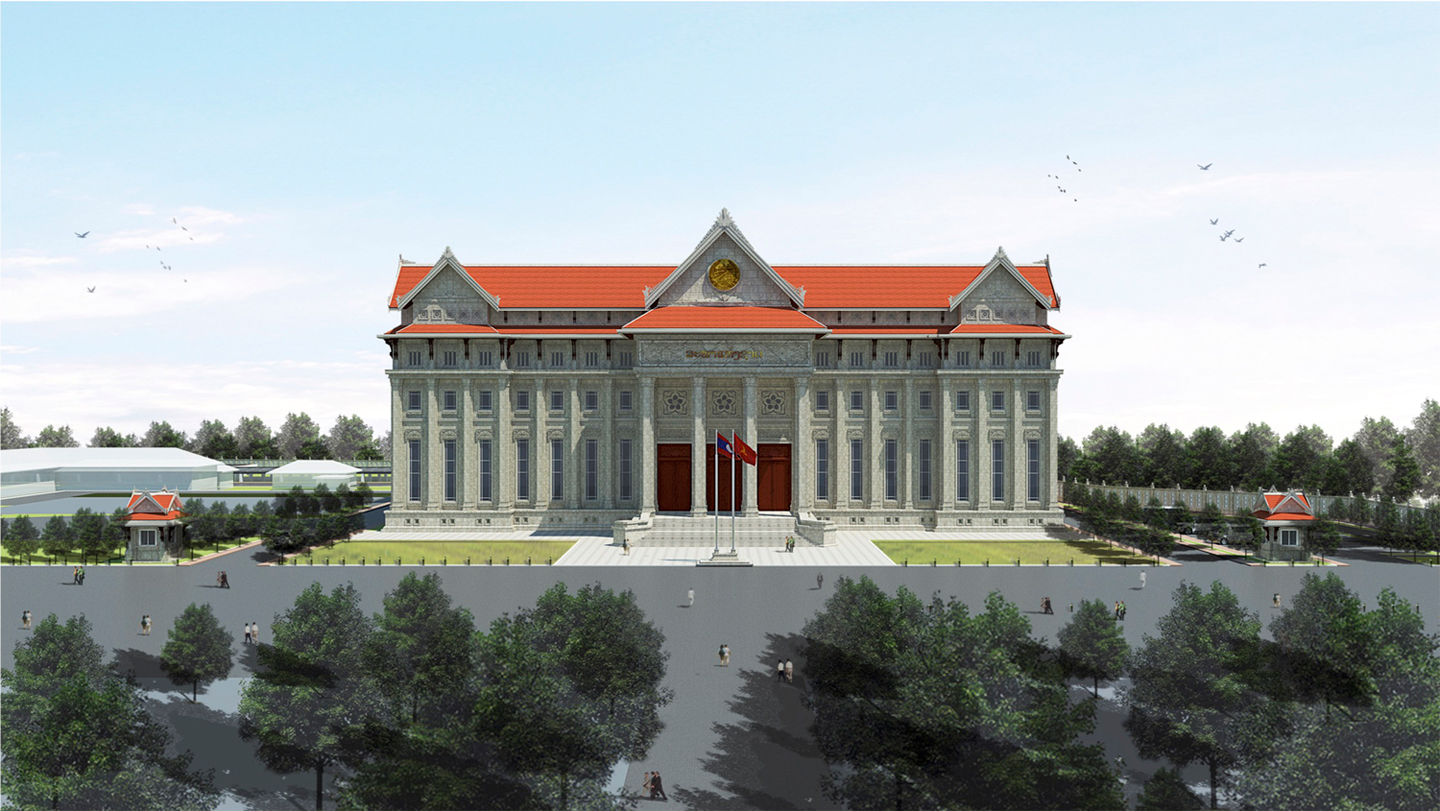
This type of entities is typically favored by investors, particularly foreign investors, however a limited company must have at least two shareholders and one director. As the name suggests the liability of the shareholders is limited to the capital invested by them. However there are many restrictions on foreign investors about share equity with a local partner, so they opt for the limited company structure because their liability is clearly limited.
Sole limited company
Sole limited companies follow the same rules as limited company, but the major difference is that the shareholding structure includes only a single shareholder. Further, if a regular limited company has a single shareholder during the course of its activities, then it will be required to change its legal structure to a sole limited company.

Public limited company
To form a public limited company, minimum capital investment required is USD 125,000. Further, it requires at least seven shareholders, three company directors, and one legal representative to set up a public limited company.
Wholly owned foreign company
Many businesses which usually export goods from Laos, set up this kind of business entity. It gives 100% ownership to the foreigner.
Branch Office
Companies such as banking institutions, financial services, insurance, airlines usually set up a branch office however, the parent company decides the activities of the branch office.
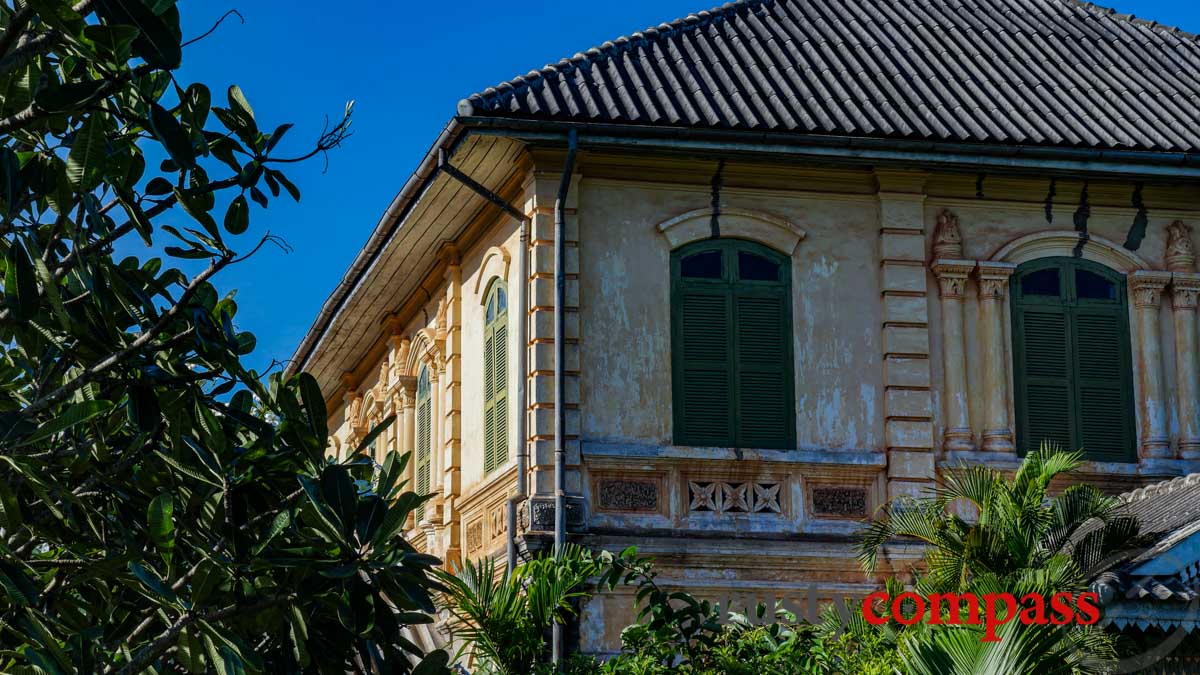
SETTING UP OF A LIMITED COMPANY IN LAOS
The two major reasons why multinationals want a company registration in Laos is the low labour cost and tax benefits. To start a new company, it is imperative to have a concrete business plan.
The general rule is that a 100 percent foreign-owned investment is accepted under Lao law. There are no restrictions on foreign investment in Laos, except as otherwise specified.
The usual timeframe for company registration in Lao People’s Democratic Republic (PDR) is approximately two to six weeks from the date of filing a completed application with the Ministry of Industry and Commerce (MOIC).
Applying for and obtaining an industry-specific operating licence is an independent process from company establishment and may take approximately two to six months after the enterprise registration certificate has been issued, depending on the industry and the responsiveness of the relevant ministry.
Process for company registration in Laos
The incorporation of a company has the following steps:
- The person should apply for a Name Reservation Certificate. It will take one day.
- Then, apply for an Enterprise Registration Certificate (“ERC”). This will take 10 days.
- After obtaining the ERC, the person should apply for an operating licence from the relevant ministry. It will take 30 days.
- The next step would be to apply for a Tax Registration Certificate (“TRC”). This will take two weeks, but it can be done simultaneously with the previous procedure.
- After TRC, the person should obtain approval of company sign. This will take 5 days but can be done simultaneously with the previous procedure.
- Then, prepare a company seal. This will take 45 days.
- And finally, register the workers for social security. This will take 7 days. No fee will be charged.
Documents required
Among the documentation that is required to register a company in Laos are:
- Articles of Association, which are required for every business registration;
- A Board/Shareholders’ Resolution approving the proposed company’s establishment (including the proposed company name and registered capital) and appointing the shareholder’s representative(s) and the managing director of the proposed company;
- Contract of incorporation (if there are multiple shareholders);
- CVs of legal representatives and directors;
- Shareholder’s agreement;
- In the case of a limited company, the leasing agreement is required since the company must lease a space before submitting the registration application;
- Bank statements that support the financial viability of the investor;
- The personal details of the investor include copies of the passport and resume; and
- The business plan outlining the nature of the intended business and its operations.

